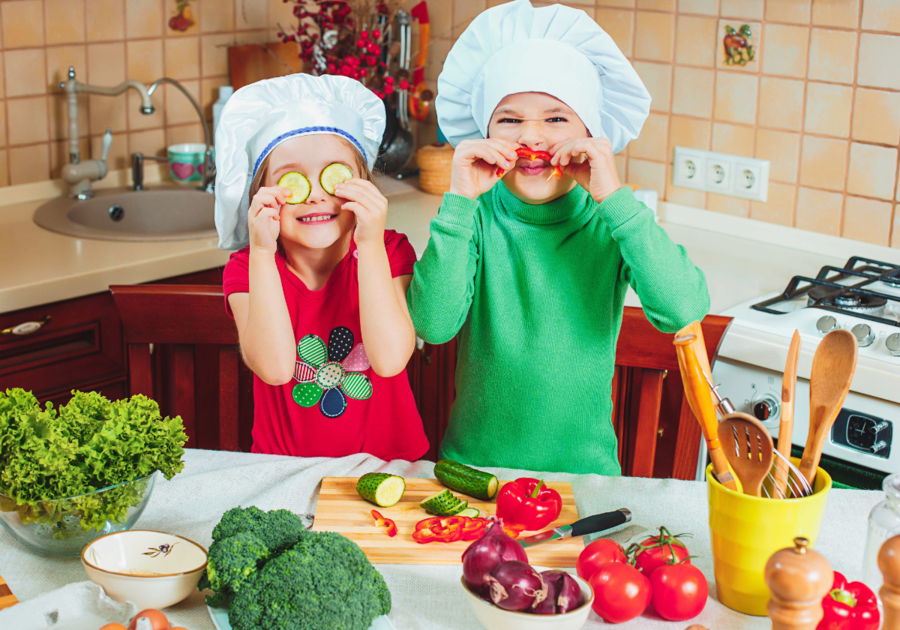Getting kids to eat vegetables can feel like a never-ending battle. But encouraging your child to eat their veggies isn’t just about filling their plate—it’s about setting them up for a lifetime of good health. Let’s break down why vegetables are a must-have for kids and how parents can make eating veggies fun and engaging.
The Power of Vegetables for Growing Bodies
Vegetables are packed with essential nutrients that kids need for healthy growth and development. Here are just a few of the benefits:
- Fiber: Supports digestion and keeps things moving smoothly. (No one likes tummy troubles!)
- Vitamins and Minerals: From vitamin A for healthy eyes and skin to potassium for strong muscles, veggies deliver the goods.
- Immune Support: Many vegetables are high in antioxidants, which help kids fight off germs and stay healthy.
- Heart Health: Red, orange, and yellow veggies support heart function and circulation.
Different veggies offer different benefits, so it’s important to introduce a variety of colors and flavors. Think of it like eating the rainbow!
How to Talk About Veggies with Your Kids
Rather than saying “Vegetables are good for you,” explain how they help the body:
- “Carrots help your eyes see better in the dark.”
- “Peppers keep you from getting sick.”
- And my kid’s favorite: “Green vegetables help you poop.”
Make it fun and age-appropriate to spark curiosity!
Why It’s Hard for Kids to Eat Veggies
Let’s be real—vegetables don’t always win the popularity contest against pizza and fries. Many kids struggle with:
- Textures they find unfamiliar or unpleasant.
- Bitterness in most vegetables especially broccoli or kale.
- A natural preference for sweet and salty flavors.
But the good news is that with a little creativity, you can help your kids build a positive relationship with vegetables.
What You Can Do to Help
Here’s how we can help your child become a veggie-lover:
1. Hands-On Experience
Kids are more likely to eat foods they help prepare. That’s why I started Katrina’s Kitchen Adventures. In our interactive cooking classes, your child gets to chop, mix, and create veggie-packed recipes—building both skills and confidence in the kitchen.
2. Creative Veggie Recipes
From zucchini noodles to rainbow veggie wraps, teach kids how to turn vegetables into exciting meals they’ll actually want to eat.
3. Fun Food Play
Incorporate food play to make trying new veggies a positive experience. For example, kids might use cucumbers to make a silly face on a sandwich or turn bell peppers into edible art on a pizza.
4. Seasonal Inspiration
Seasonal produce is fresh and flavorful. Show them how to pick and enjoy the freshest veggies of the season in the grocery store or the farmer’s market. This helps them connect with where their food comes from.
5. Dips
Don’t be afraid to use dips to mask the bitter flavor of vegetables. Hummus, guacamole, or ranch are tasty toppings for carrots, broccoli, or celery sticks. And don’t limit their dip use; I promise they won’t be using so much ranch….eventually.
Let’s Grow Healthy Habits Together
Eating vegetables doesn’t have to be a battle. With the right approach and a little support from Katrina’s Kitchen Adventures, your child can learn to enjoy veggies while developing healthy habits that last a lifetime.
Ready to make veggies fun? Join one of our upcoming kids’ cooking classes, where the magic of food meets the joy of learning. Let’s inspire your little chef to embrace the rainbow—one veggie at a time! Our next cooking class will be at the Distillery Labs kitchen on February 8th at 1pm. Sign up here.
To learn about upcoming cooking classes or to book a private class for a birthday party or a scout troop follow my Facebook page or sign up for my newsletter.



